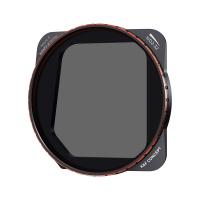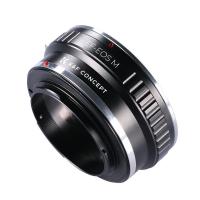What's The Magnification Of A Light Microscope ?
The magnification of a light microscope typically ranges from 40x to 1000x. However, with the use of oil immersion lenses, magnifications up to 2000x can be achieved. The magnification of a light microscope is determined by multiplying the magnification of the objective lens by the magnification of the eyepiece. For example, if the objective lens has a magnification of 40x and the eyepiece has a magnification of 10x, the total magnification would be 400x. It is important to note that the resolution of a light microscope is limited by the wavelength of light, which is approximately 500 nanometers. This means that structures smaller than 500 nanometers may not be visible under a light microscope.
1、 Objective lenses
The magnification of a light microscope is determined by the objective lenses. These lenses are located on the nosepiece of the microscope and are responsible for gathering and focusing light onto the specimen. The magnification of a light microscope can range from 40x to 1000x, depending on the objective lens used.
The magnification of a light microscope is calculated by multiplying the magnification of the objective lens by the magnification of the eyepiece. For example, if the objective lens has a magnification of 40x and the eyepiece has a magnification of 10x, the total magnification would be 400x.
It is important to note that the maximum useful magnification of a light microscope is limited by the resolving power of the lens. The resolving power is the ability of the lens to distinguish between two closely spaced objects. The maximum useful magnification of a light microscope is typically around 1000x, beyond which the image becomes blurry and distorted.
In recent years, advancements in technology have led to the development of high-powered light microscopes, such as confocal microscopes and super-resolution microscopes. These microscopes use specialized techniques to overcome the limitations of traditional light microscopes and can achieve magnifications of up to 100,000x. However, these microscopes are typically more expensive and require specialized training to operate.

2、 Eyepiece lenses
The magnification of a light microscope is determined by both the eyepiece lenses and the objective lenses. The eyepiece lenses typically have a magnification of 10x, while the objective lenses can range from 4x to 100x or more. The total magnification of the microscope is calculated by multiplying the magnification of the eyepiece by the magnification of the objective lens in use.
However, it is important to note that magnification is not the only factor that determines the quality of the image produced by a microscope. Other factors such as resolution, contrast, and depth of field also play a crucial role in producing clear and detailed images.
In recent years, there has been a growing interest in using digital microscopes that utilize advanced imaging technologies such as fluorescence and confocal microscopy. These microscopes offer higher magnification and resolution than traditional light microscopes, and they also allow for 3D imaging and analysis of biological samples.
Overall, while the magnification of a light microscope is an important factor in determining the quality of the image produced, it is just one of many factors that must be considered when choosing a microscope for a particular application.

3、 Tube length
The magnification of a light microscope refers to the degree to which an object is enlarged when viewed through the microscope. This is determined by the combination of the objective lens and the eyepiece lens. The magnification of a light microscope can range from 40x to 1000x, depending on the lenses used.
However, it is important to note that magnification alone does not determine the quality of the image produced by a light microscope. Other factors such as resolution, contrast, and depth of field also play a crucial role in producing clear and detailed images.
Another important factor to consider when using a light microscope is the tube length. The tube length refers to the distance between the objective lens and the eyepiece lens. This distance is important because it affects the quality of the image produced by the microscope. In general, a longer tube length will produce a clearer and more detailed image than a shorter tube length.
Recent advancements in technology have led to the development of new types of light microscopes, such as confocal microscopes and super-resolution microscopes. These microscopes use advanced techniques to improve the resolution and clarity of the images produced, allowing for more detailed analysis of biological samples.
In conclusion, while the magnification of a light microscope is important, it is not the only factor to consider when using this type of microscope. Tube length and other factors such as resolution and contrast also play a crucial role in producing clear and detailed images.

4、 Numerical aperture
The magnification of a light microscope refers to the degree to which an object is enlarged when viewed through the microscope. The magnification of a light microscope is determined by the combination of the objective lens and the eyepiece lens. The objective lens is responsible for the initial magnification of the specimen, while the eyepiece lens further magnifies the image.
However, the numerical aperture (NA) is also an important factor in determining the magnification of a light microscope. The NA is a measure of the ability of the objective lens to gather light and resolve fine details of the specimen. A higher NA means that the objective lens can gather more light and resolve finer details, resulting in a higher magnification.
In recent years, there has been a growing interest in improving the resolution of light microscopes beyond the diffraction limit, which was previously thought to be the maximum resolution achievable by light microscopy. This has led to the development of new techniques such as super-resolution microscopy, which can achieve resolutions up to ten times higher than conventional light microscopy.
In conclusion, while the magnification of a light microscope is determined by the combination of the objective and eyepiece lenses, the numerical aperture is also an important factor in determining the resolution and magnification of the microscope. With the development of new techniques such as super-resolution microscopy, the resolution and magnification of light microscopes continue to improve, allowing for more detailed and accurate observations of biological specimens.






































